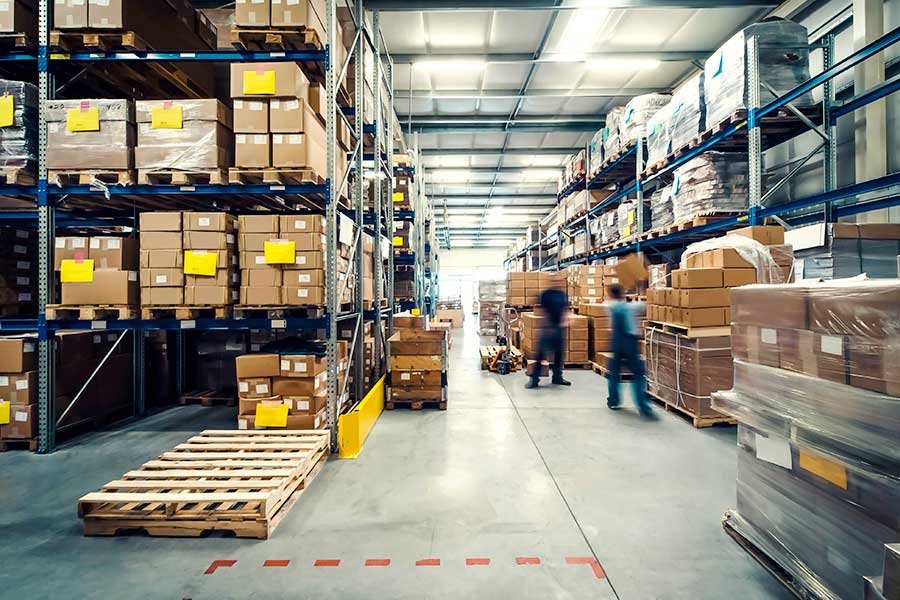Resources - Blog
How to Strategically Leverage Drop Shipping for Your Amazon Business

Stay on top of the latest e-commerce and marketplace trends.
At first glance, drop shipping might seem like a sure way to drive Amazon profits. You find products to sell, create listings, advertise, collect orders, and let your supplier ship them out. Sounds easy, right?
As with any Amazon business, there are no hassle-free, guaranteed routes to success — and that doubly applies to drop shipping. Basing your Amazon business on this fulfillment method will be difficult, if not impossible, to sustain. Its benefits are generally more suited to advanced sellers, while its disadvantages can upend a new seller’s business.
In this post, we explore why you might use drop shipping and how strategically leveraging it can improve your overall Amazon business.
Drop Shipping Defined
Drop shipping is when a manufacturer or supplier directly ships a product to the customer; the Amazon retailer handles everything else —from order processing and returns to Amazon marketing and advertising. Most of the time, the seller passes on the sales order to the product’s supplier, not the manufacturer.
With this fulfillment method, Amazon sellers no longer need to worry about procuring a warehouse, buying or stocking inventory, paying FBA storage fees, or shipping out products. The supplier bears the costs for inventory, storage, and packaging, in addition to facilitating shipments.
Amazon’s Requirements
Amazon retailers can drop ship approved products but only under the following requirements:
- Be the seller of record of your products.
- Identify yourself as the seller of your products on all packing slips and other information included or provided in connection with them.
- Be responsible for accepting and processing customer returns of your products and comply with all other terms of your seller agreement and applicable Amazon policies.
Examples of drop shipping processes that are not permitted are below:
- Purchasing products from another online retailer and having that retailer ship directly to customers
- Shipping orders with packing slips, invoices, or other information indicating a seller name or contact information other than your own
Failure to comply with these requirements may result in the suspension or removal of your selling privileges.
The Disadvantages of Drop Shipping
As a fulfillment method, drop shipping comes with some notable disadvantages, especially for new sellers. For established retailers who presumably have deeper catalogs, greater levels of traffic, and more Amazon experience, the following can be easier to navigate:
1. Slim Margins
Since suppliers bear more of the costs, they earn the majority of the profits. As a result, Amazon retailers usually only make slim margins on drop-shipped items. One optimistic estimate puts that number at 20%, even though it does not account for other Amazon costs like advertising or any special handling fees that a supplier might impose.
2. Excess Competition
Drop shipping is competitive because, in theory, anyone can do it. The barrier to entry is low since you do not need to buy inventory in bulk or at all. While this competition makes earning a profit difficult, it can also cause another issue. Sellers who use the same supplier might deplete inventory to the point where it slows sales velocity or risks a stock outage.
3. Lack of Control
Having no control over shipping or inventory logistics can cause issues for Amazon retailers. Suppliers can run out of stock, ship orders late, or use poor packaging, which can irritate your customers and damage your seller metrics. Consistent issues can result in negative reviews as well as a higher order defect rate, pre-fulfillment cancellation rate, or late shipment rate. A big enough issue that affects multiple orders could very well spell disaster for a budding retail business.
4. Returns
While some suppliers do handle returns, many do not. If your supplier provides low-quality or defective products, customers will be returning them to you. You will either need to store the product, fix it, or possibly ship it back to the supplier. To avoid this issue, you want to find well-run suppliers who source high-quality products and who handle returns.
5. Lack of Brand Building
You might wonder why suppliers do not require retailers to buy in bulk in the first place. Oftentimes, the products that suppliers sell are not from premium brands. The brands are small, unknown, or just not in demand enough to command more favorable terms on the market. For the Amazon seller, this lack of brand power means you will have trouble associating yourself with one strong brand. On a more basic level, you are also selling another company’s brand, not your own.
6. Communication Delays
Amazon retailers will sometimes need to communicate with a supplier to iron out a customer issue. Since there are three parties involved, solving an issue will require going from one party to the other. Naturally, this chain can cause delays. Plus, if a supplier is slow to respond, the process might take even longer.
7. Trademark Infringement
Unscrupulous suppliers might sometimes send out products with branding that infringes on another brand’s design. As a retailer for these products, you can be held complicit unless you have a drop shipping contract in place.
Why New Sellers Will Have Trouble Achieving Massive Success
New sellers will want to temper their expectations with drop shipping. Yes, you can earn a profit; however, sudden enterprise-level success is unlikely given the thin margins. To actually succeed, you would need to rapidly sell a huge volume of many different products at once without any other issues like bad reviews or returns to halt your business. You would also need to outperform the competition and fully optimize your operation.
As we have often discussed in other Feedvisor posts and guides, the best method for executing on all of these tasks is to use an end-to-end Amazon optimization software. Most FBA sellers scale up to optimization software; a drop shipper seeking overnight success would need it from the very beginning.
The Advantages of Drop Shipping
Drop shipping offers advantages that open up interesting new possibilities particularly for advanced Amazon retailers.
1. Test New Products or New Product Categories
Drop shipping is a smart fulfillment method for expanding your catalog and conservatively testing out new products. Even if scouting software can help you find potential new products, you might not turn a profit once you start selling them. Rather than buying inventory in bulk, you can hedge your bets with drop shipping and assess your sales velocity. From there, you will have a better grasp on what size inventory to purchase later and how much to spend on advertising.
2. Backup Inventory for Unpredictable Demand or Logistics Issues
Despite your best sales projections, product demand can fluctuate wildly, especially during the Q4 holiday season. Drop shipping can help you minimize the risks of overstocking or of going out of stock. Rather than stocking up on excess inventory, you can source a backup supplier to drop ship for you.
Similarly, should your warehouse or the shipping logistics for your inventory have issues, a supplier can potentially step in to drop ship your orders. Even if your Amazon operation is a well-oiled machine, you should have a few suppliers on standby.
3. Ship to Problematic Destinations
Drop shipping can help you save on costs incurred when sending your products to certain regions of the United States or out of the country. Depending on your product assortment and your warehouse location, shipping some items might be prohibitively expensive or warrant excess taxes and fees. Drop shipping can give you a cost-saving alternative. Also, if you start to see an uptick in demand within one of these areas, drop shipping can allow you to test out whether you should set up a warehouse there or not.
4. Items Requiring Special Treatment
Not all products can be easily or cheaply packed, stored, and shipped out. Drop shipping is a fantastic way to save money for products that require unique storage conditions, special packaging for deliveries, or that cost too much to send to your warehouse. Those include the following:
- Fragile products, like glassware, vases, lamps or certain electronics
- Extremely valuable products, like antiques or jewelry
- Special products, such as photosensitive paper or foods that must be kept frozen
- Heavy products, such as washers, dryers, and refrigerators
- Large products, such as patio umbrellas, kitchen cabinet systems, and even bleachers
Depending on your retail business, you might still want to offer these products but just fulfill them through drop shipping.
5. Selectively Free up Time
The larger your Amazon operation, the more complicated it becomes. Even if you use Amazon optimization software, you will still want to free time for addressing any critical areas, like customer reviews, product listings, or advertising. Drop shipping some of your SKUs can remove the burdens of managing this inventory.
Final Thoughts
Drop shipping does not guarantee easy profits but it does offer strategic advantages that save time and money. Experienced Amazon sellers new to this fulfillment method will want to take the extra steps to understand how to integrate it into their business. Having as many tactics at your fingertips as possible can be the difference between outperforming the competition or not.
Learn what Feedvisor can do for your business.
When you partner with Feedvisor, you automatically receive access to our true, AI-driven technology and hands-on team of e-commerce experts. Contact one of our team members today to learn more about our end-to-end solution for brands and large sellers on Amazon, Walmart, and e-marketplaces.




